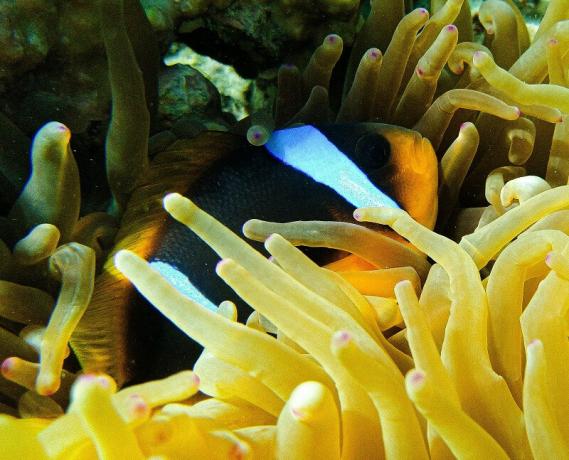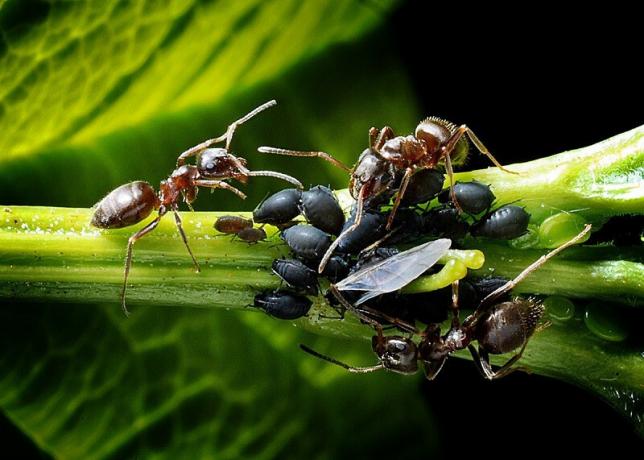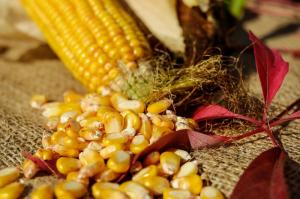Mutualism: what it is, characteristics and examples
Among living beings we can find various types of interspecific relationships, that is, interactions in which members of two or more species are involved. Predation, cooperation, parasitism and commensalism are some well-known examples of this type of interaction.
Today we are going to talk about mutualism, an interaction in which the two species involved always benefit. To understand it in greater depth, we will also see some interesting examples of mutualism that occur between animals, plants, fungi and other forms of life.
- Related article: "What is Ethology and what is its object of study?"
What is mutualism in nature?
mutualism is a type of interspecies relationship in which two or more individuals involved gain mutual benefit through an advantageous association. This type of link does not cause damage to either and makes both organisms involved see their biological aptitude increased, that is, they have a greater capacity for survival and reproduction.
This type of interspecific relationship can be seen as a kind of barter or biological exchange, in which each species offers and receives something. Depending on what is given and what is gained, we can classify mutualistic relationships as follows.
1. resource-resource relationships
In this type of relationship, two species exchange some type of substance or biological resource essential for both, which implies that this relationship makes each species receive a material gain.
2. Service-natural resource relationships
In the service-natural resource mutualism there is the exchange of some produced resource, offered by one of the two species, while the other contributes to the relationship by offering some action or conduct beneficial to the other.
3. Service-service relationships
Service-service mutualism is less frequent. It consists in that the two associated species exchange some type of behavior or performance that benefits them both.
- You may be interested: "The theory of biological evolution: what it is and what it explains"
Differences with other interspecific relationships between living beings
Sometimes it happens that when talking about mutualism it is confused with other interspecific relationships, especially with commensalism and cooperation. As a brief clarification, we are going to briefly describe the rest of the interspecific relationships to understand how they differ from mutualism.
Parasitism
In parasitism we have an organism that feeds on the other, harming it but not killing it. Here one benefits while the other is harmed.
Commensalism
Commensalism occurs when one species benefits from the relationship, while the other is neither helped nor harmed.
predation
Predation occurs when one species feeds on another. That is to say, one benefits by managing to feed on another form of life, ending his life.
Competence
Competition is the situation in which two different species depend on the same resources and must fight for one to obtain such resources.
Cooperation
In cooperation the two species benefit from each other, but they can perfectly survive separately. This differs from mutualism, because in mutualistic relationships both species depend on the other for their survival.
- Related article: "Animal Assisted Intervention: a special therapy"
Some examples of mutualism
Next we are going to see a few examples of mutualistic behaviors in living beings.
1. Mycorrhiza
Mycorrhiza is a symbiotic relationship between a fungus and the roots of land plants. In this interspecific relationship, the fungus receives carbohydrates and vitamins that it cannot synthesize by itself, since it is a heterotrophic organism that cannot produce its own organic matter.
Plants are autotrophic, that is, they can manufacture organic matter, but for this they require certain nutrients, minerals and water that, conveniently, fungi can offer them.
The mycorrhiza is a fundamental mutualistic relationship for the survival of plants because it is estimated that about 95% of terrestrial plant species depend on fungi for certain inorganic nutrients. This is a resource-resource mutualism, as both plants and fungi receive nutrients.
- Related article: "The 11 types of fungi (and their characteristics)"
2. Pollination
Pollination is essential for the reproduction of many plants. Is about a mutualistic relationship between an animal and an angiosperm plant. Angiosperm plants have flowers with stamens, which are male reproductive organs, and carpels, female reproductive organs. Flowers with stamens are those that have pollen, particles that must reach other flowers to achieve the reproduction of the plant.
Many animals contribute to pollination, especially insects such as bees, ants and butterflies., although birds and mammals also participate, including bats. This mutualistic relationship is of the service-resource type, since the animals carry out the pollination service while the Plants offer the nectar of their flowers as a resource, the main attraction for animals to go to their flowers and impregnate themselves with pollen.
- You may be interested: "The 8 types of reproduction and their characteristics"
3. anemone and clownfish
The sea anemone (order Actiniaria) is an animal that looks like a flower. This organism, a cousin of jellyfish and corals, produces actinoportins, toxic substances with a paralyzing effect. Despite its toxic capacity, the clownfish (Amphiprioninae subfamily), a very striking red, yellow, orange, white and black animal, gets along very well with this cnidarian.
Each species of clownfish is associated with different species of anemones. These fish are immune to actinoportins, so they can move freely between the tentacles of the sea anemone and even use it as a refuge., source of food and protection against larger fish. Anemones benefit from having these fish as hosts because they eliminate their parasites. This is a service-service relationship.

4. acacia and ant
The bull's horn or ergot (acacia cornigera) is a shrub that can reach 10 meters in height that has large hollow thorns similar to bovine horns. Between its trunks live ants that feed on the sugars that the plant secretes.
The presence of the ants is beneficial to the plant because they repel herbivorous animals that may eat its shoots. Added to this, the ants feed on the plants that grow around the bull's horn, eliminating competitors for resources, water, soil, sun and nutrients that the acacia might have. This is a service-resource relationship.
5. lizard and scorpion
Saharan spiny-tailed lizards (Uromastyx geyri) hide in burrows that they dig to protect themselves from the sun and predators. This reptile lives together with the fat-tailed scorpion (Androctonus australis), who gives shelter In exchange, if a predator enters the burrow, the arachnid poisons it with its painful sting.
6. ants and aphids
The mutualistic relationship between ants and aphids is well known. Aphids (family Aphididae) are parasites of angiosperm plants, as they harm them by making small holes in the leaves where they suck the sap. However, its relationship with ants is mutualistic, since both species benefit.
You could say that ants treat aphids like cattle. The ants approach these insects, which are much smaller in size than they are, and rub them with their antennae. When this happens, the aphid secretes honeydew, a substance that ants love. Aphids benefit from the presence of ants because they protect them against other species.

7. Moray and red shrimp
Moray eels (family Muraenidae) are carnivorous fish with large, sharp teeth that live in crevices in the deep sea. These intimidating animals have the problem that they cannot maintain their oral hygiene on their own, so they cannot clean their teeth after eating. In this task they are helped by the red prawns, with whom they share a burrow. Prawns clean the teeth of moray eels in exchange for their protection.
8. toad and tarantula
We have a curious case of mutualism with toads and tarantulas. Specifically, the narrow-mouthed toad (Gastrophryne carolinensis), an animal that lays its eggs in a burrow. The relationship is that the toad allows the tarantula to live in its burrow, receiving protection from the arachnid. On the part of the spider, being in the burrow serves to protect it from parasites and the toad protects its eggs.
9. Egrets and buffalo
The cattle egret (bubulcus ibis) is a pelecaniform bird. This animal follows zebras, antelopes, wildebeests and buffalo to remove parasites, small animals on which the bird feeds. Thus, the bird gets its food while helping various animals to stay clean and not contract diseases due to these parasites.
10. hippos and birds
Similar to the cattle egret, many other birds perch on large animals to eat their parasites, including hippos. These animals benefit from the birds because they keep them clean, while the birds not only feed but, being on very intimidating animals, none of the birds' predators come close when they're on top of the hipposyes


